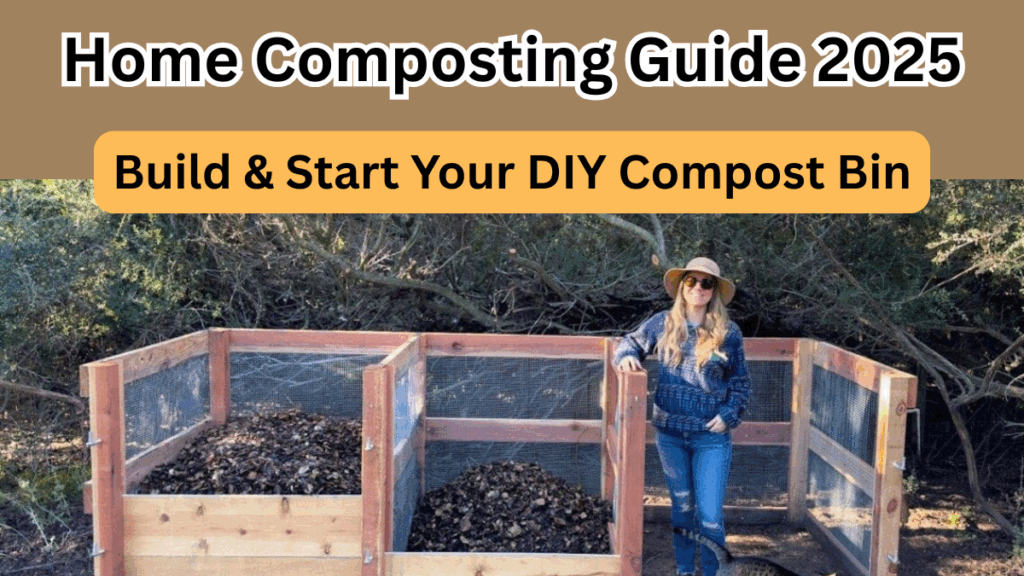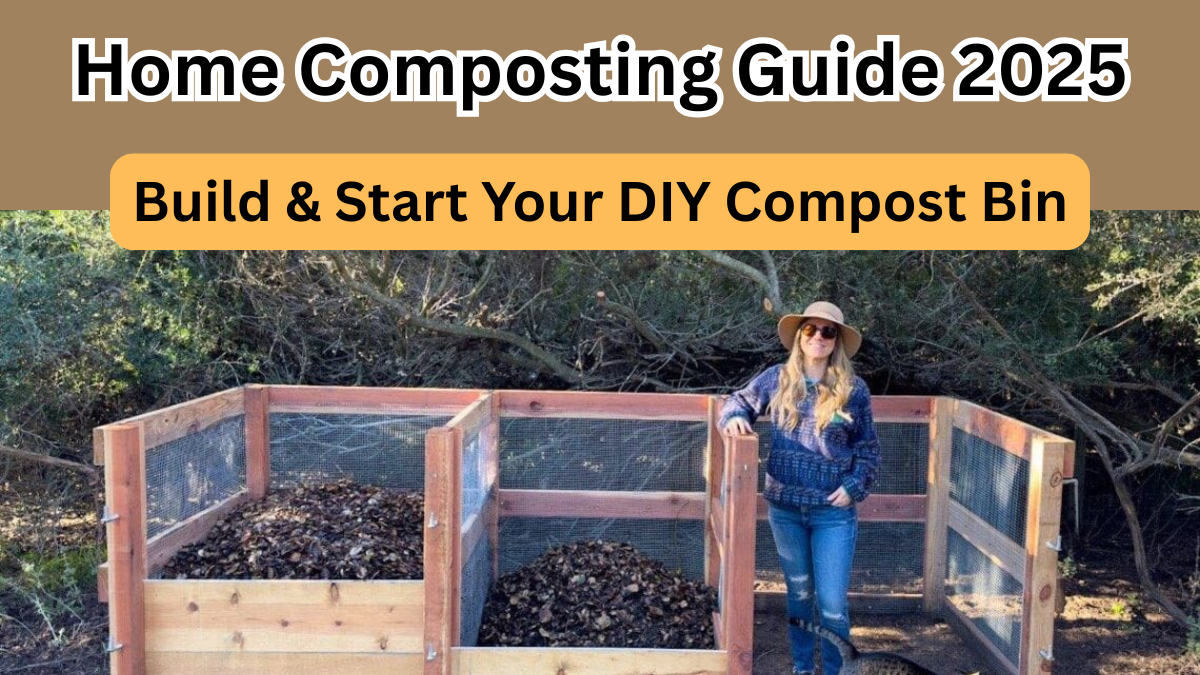With growing awareness about sustainable living, more people are embracing composting at home. This Composting at Home Guide for 2025 will walk you through simple, practical steps to build and maintain your own DIY compost bin—even if you’re just starting.
Whether you’re a seasoned gardener or new to eco-friendly habits, this DIY compost for beginners guide will help you reduce waste and create nutrient-rich compost for your plants.

Why Start Composting at Home in 2025?
Composting is one of the easiest and most effective ways to:
-
Minimize household waste
-
Reduce carbon footprint
-
Enrich your garden soil naturally
-
Save money on chemical fertilizers
With this Composting at Home Guide, you can turn your kitchen scraps into gold for your garden!
What You Need to Build a DIY Compost Bin
If you’re looking for DIY compost for beginners, you don’t need to overcomplicate it. Start with these simple materials:
| Material | Purpose |
|---|---|
| Large bin or wooden crate | Container for composting |
| Drill or knife | For making air holes |
| Kitchen scraps | Green waste (vegetable peels, fruit scraps) |
| Dry leaves or cardboard | Brown waste (carbon-rich material) |
| Water spray bottle | Keeps compost moist |
| Garden fork or stick | To turn the compost |
How to Build Your DIY Compost Bin – Step by Step
Here’s how to get started with DIY compost for beginners:
Step 1: Choose the Right Spot
-
Pick a shaded or semi-shaded area in your garden or balcony.
-
Ensure good drainage.
Step 2: Prepare the Bin
-
Use a large bin or wooden crate.
-
Drill small holes on the sides and base for airflow.
Step 3: Add Layers
-
Alternate green (wet) and brown (dry) waste.
-
Start with dry leaves or cardboard at the base.
-
Add kitchen waste on top.
-
Repeat the layers.
Step 4: Maintain Moisture
-
Spray water occasionally to keep the compost damp but not soggy.
Step 5: Turn the Compost
-
Use a stick or fork to stir the compost once a week.
-
This helps speed up decomposition.
What to Compost and What to Avoid
Here’s a quick reference table for what you can and can’t compost at home:
| Can Compost | Avoid Composting |
|---|---|
| Fruit & vegetable peels | Meat, fish, dairy |
| Coffee grounds & filters | Oily foods |
| Dry leaves & twigs | Pet waste |
| Shredded newspaper | Plastics & synthetic materials |
| Eggshells | Diseased plants |
Composting Tips for Beginners
-
Chop larger waste into smaller pieces to speed up composting.
-
Keep a small kitchen compost bin to collect scraps daily.
-
Avoid adding too much water; it should feel like a wrung-out sponge.
-
Be patient – good compost can take 2-3 months to form.
Benefits of Composting at Home
-
Cuts down on landfill waste
-
Creates free, natural fertilizer
-
Improves soil structure and plant health
-
Reduces greenhouse gas emissions
Following this Composting at Home Guide not only benefits your garden but also contributes to a healthier planet.
FAQs
1. How long does home composting take?
Home composting typically takes 2 to 3 months, depending on the materials used and how regularly you turn the compost.
2. Can I compost in a small apartment?
Yes, you can! Many DIY compost for beginners setups are perfect for balconies or even kitchen corners using compact bins or vermicomposting.
3. Why does my compost smell bad?
A foul smell usually means there’s too much green waste or the compost is too wet. Add more dry materials like cardboard and turn the compost regularly.
4. Is it safe to compost eggshells?
Yes, eggshells are great for composting as they add calcium. Just crush them into smaller pieces to help them break down faster.
Click here to learn more
